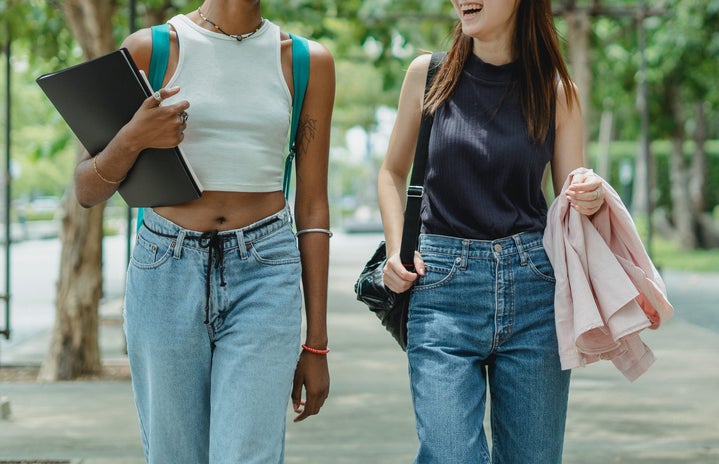If you ever find yourself absent-mindedly watching people on the DCU campus’, you’re sure to notice a very distinct style trend that is bound to catch your eye.
This trend is that of the low-rise jeans, baby tee, wearing girls who look like they’ve walked straight out of an early 2000s movie. While some go all out and really give the impression that they’ve landed in the wrong decade, others take a more simplistic approach, incorporating certain elements of the early 2000s style into their outfits. However, regardless of the way you wear it, it’s clear to see that the 2000s obsession is far from over on campus and this Lizzie McGuire-esque aesthetic has truly become a college staple, but how has this come to be?
The fashion of the 2000s was heavily influenced by the past, with very early 2000s trends, like McBling, borrowing ultra-low waistlines and wraparound sunglasses from the futuristic Y2K fashion trend of the 90s and Pop-Punk trends following elements of 70s and 80s Punk.
However, even with all their past influences, the trends of the early 2000s were very new as many of them took inspiration from the new age of digital technology and the sparkling new millennium. With the rise of flip phones, the iPod, celebrity culture and paparazzi access the world became more interconnected than ever.
All this allowed for the current trends to be influenced by more cultures and mindsets than ever before, like that of these newly accessible celebrities’ lifestyles whose purpose became more about aligning with brands and selling things to the public as time went on. This worked for the public as they felt they were getting closer to becoming like their favourite celebrities and these celebrities made more money from the lifestyle and fashion choices they were selling.
This blingy, consumerist fashion style began to evolve into something much more understated following the 2008 recession. It was later considered reserved for relics of the 2000s, such as Britney Spears music videos or movies like Mean Girls.
However, the style began to have a resurgence around Covid-19 as young people who never experienced the trends began to spend more time online in search of comfort which led them to turn to ‘nostalgic’ media and activities such as shopping second-hand.
This resurgence was spurred on by the fact that trends run periodically, usually a 20-year cycle, so it was likely going to naturally make a reappearance. All this came together at an ironic time as celebrity worship and obsession with glamour and access has never been as prevalent in popular culture as it is now, truly mirroring the society that these “new trends” were taken from.
As the trends have reappeared and leaked into the mainstream they’ve evolved and changed culminating in the modern day take on early 2000s trends, like camouflage trucker hats. For example, in Chappell Roan’s ‘Midwest Princess’ merch, which combines elements of different 2000s trends and Olivia Rodrigo’s butterfly top which was a straight homage to Mariah Carey’s from 2000.
It is these evolved versions of the trends that are sweeping today’s fashion landscape, especially within Gen Z who are the ones who are responsible for their growing and lasting popularity. This is very clear in any space populated by teenagers and young adults, especially universities. Now more than ever universities have become havens for self-expression and reinvention. What better place to try on new personas and aesthetics than somewhere so huge that no one knows your name, or cares what you do.
So, it is really no surprise that the trends of the 2000s, which were a result of young people’s influence are resurging and staying so relevant to people who share these same ideals and experiences, the average university student. I’m sure many welcome the resurgence of the various trends while some might hate it or think it’s not that deep. Regardless of all those opinions it’s abundantly clear that the 2000s are back and are here to stay.


